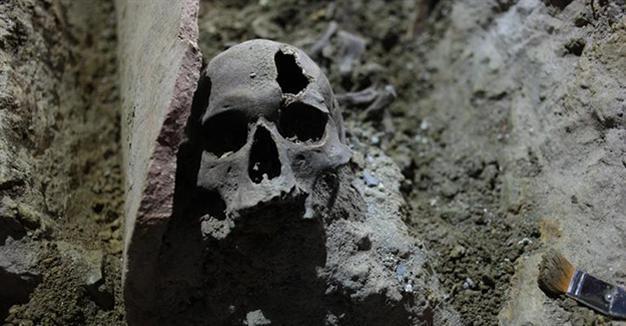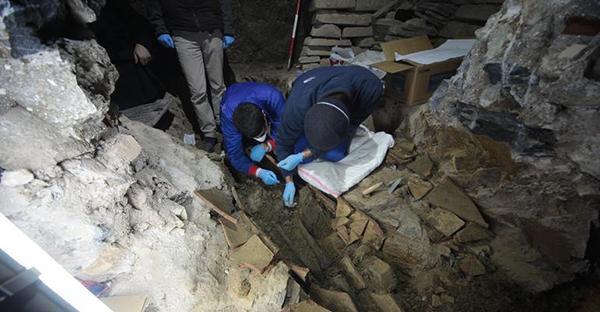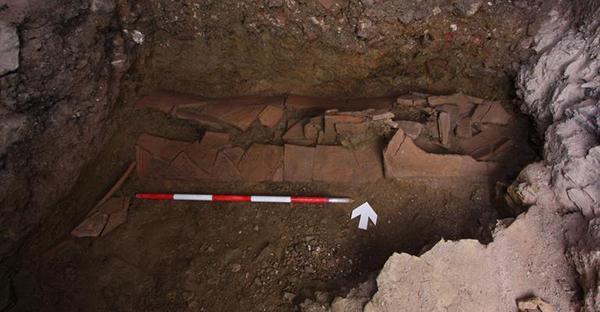Roman-Byzantine grave unearthed on Istanbul’s İstiklal Avenue
Savaş Özbey - ISTANBUL
 Archaeologists have uncovered a Roman-Byzantine grave underneath Istanbul’s famous İstiklal Avenue, providing evidence of human activity in one of the city’s most important areas at a date earlier than previously thought.
Archaeologists have uncovered a Roman-Byzantine grave underneath Istanbul’s famous İstiklal Avenue, providing evidence of human activity in one of the city’s most important areas at a date earlier than previously thought.The grave was unearthed during the restoration of the historic Casa Garibaldi building on the avenue when a worker discovered a 1,600- to 1800-year-old skull eight meters under the surface.
Archaeologists from the Istanbul Archeology Museum subsequently arrived and conducted excavations in the area.

According to experts, excavations suggest the presence of a late Roman or early Byzantine grave that stretches along İstiklal Avenue.
Although the first skeleton was removed by archeologists and taken to the Istanbul Archaeology Museum, the remaining skeletons have not been removed.
The skeletons, which are thought to belong to Orthodox Byzantine era, were then sanctified by an Orthodox priest from Greece’s Mont Athos, or Ayronos, as Zeynep Kızıltan, president of Istanbul Archaeology Museums, said the grave was established between the fourth and sixth centuries A.D.
Kızıltan said they also found some artifacts that were used in daily life, indicating that the area was residential at the time.
The findings take the history of İstikal Avenue, which was known as a 19th century Ottoman neighborhood, back to the fourth century.
İstiklal Avenue, which runs between Istanbul’s renowned Taksim Square and Tünel Square, is a major tourist spot and culture hub that attracts some 400,000 people every day.

















